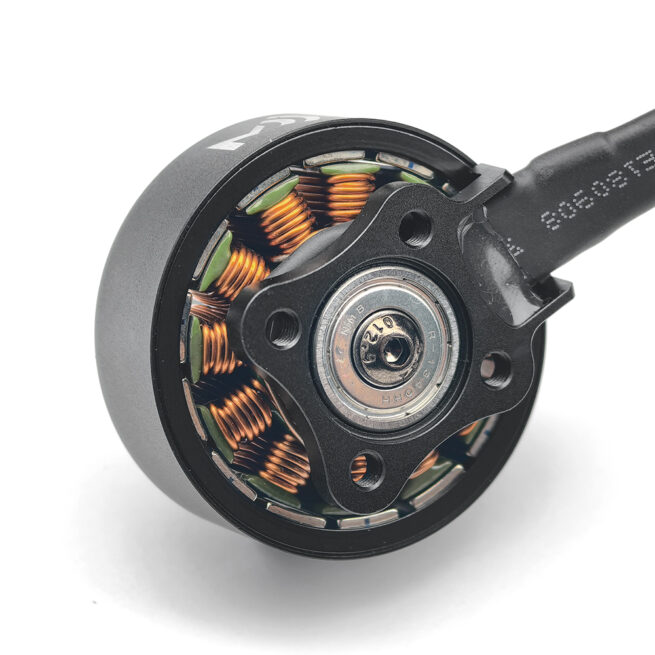
- Why Brushless Motors Rule FPV Racing Drones?
First and foremost, brushless motors are the gold standard for FPV drones—and for good reason. Unlike their older brushed counterparts, brushless motors have no physical contacts (brushes) that wear out over time. This means:
Higher efficiency: More power reaches the propellers, translating to longer flight times and faster acceleration.
Durability: Fewer moving parts mean less maintenance and a longer lifespan.
Smoother performance: Delivers consistent torque, critical for sharp turns and rapid throttle changes during races.
Whether you’re zipping through a forest course or competing in a high-stakes race, brushless motors ensure your drone responds instantly to your commands.
-
Key Features to Look For in a Brushless Motor
Secondly, Not all brushless motors are created equal. To find the best match for your FPV racing drone, focus on these SEO-friendly keywords: KV rating, motor size, thrust, and stator design.
KV Rating:
This measures how fast the motor spins per volt applied (RPM/Volt).
Low KV (e.g., 1500-2200KV):
Ideal for larger propellers and long-range builds.
High KV (e.g., 2500-3000+KV):
Perfect for small, lightweight drones needing explosive speed.
Motor Size:
Motors are labeled by stator dimensions (e.g., 2207 = 22mm diameter, 7mm height).Larger stators (like 2306 or 2408) generate more torque for aggressive maneuvers.
Thrust and Efficiency:
Always check thrust-to-weight ratios. A motor that’s too powerful might drain your battery quickly, while a weak one won’t keep up in races.
-
Top Brushless Motor Picks for FPV Racing
2806 2807 Brushless motor for Drone

Thirdly, Top Ranking RC Drone SAVOX BLDC 3750mm Size 1500KV Out Rotor Type DC Brushless Motor with Cooling System

Finally, If you want more information about brushless motors, you can contact us here
Maintenance Tips for Peak Performance
To keep your brushless motor running like new:
Clean Regularly: Dust and debris can jam the bearings. Use compressed air after flights
Check for Heat: Overheating shortens motor life. Ensure proper ESC (Electronic Speed Controller) settings.
Lubricate Bearings: A drop of light oil reduces friction and noise.
Final Thoughts
Brushless motors are the backbone of any competitive FPV racing drone. By focusing on the right KV rating, motor size, and thrust, you’ll unlock faster lap times and smoother control. Remember, even the best motors need care—regular maintenance ensures they’ll keep you ahead of the pack.
Ready to upgrade your build? Share your favorite brushless motor in the comments below, and let’s race!
